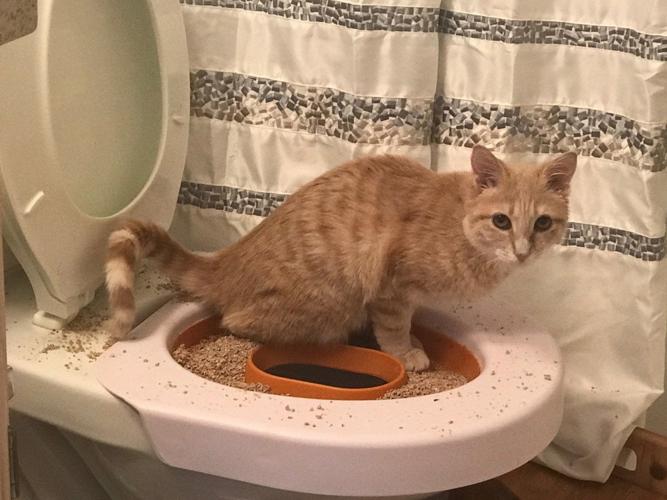Prevent Clogs and Damage: Never Flush Cat Poop Down Your Toilet - Professional Recommendations
Prevent Clogs and Damage: Never Flush Cat Poop Down Your Toilet - Professional Recommendations
Blog Article
We have uncovered this great article relating to Don’t flush cat feces down the toilet directly below on the net and decided it made good sense to talk about it with you over here.

Introduction
As pet cat owners, it's essential to bear in mind exactly how we deal with our feline friends' waste. While it might seem hassle-free to flush cat poop down the bathroom, this practice can have destructive repercussions for both the environment and human wellness.
Alternatives to Flushing
Luckily, there are safer and extra accountable means to throw away cat poop. Take into consideration the complying with alternatives:
1. Scoop and Dispose in Trash
The most common technique of disposing of cat poop is to scoop it into an eco-friendly bag and throw it in the garbage. Make certain to utilize a committed trash inside story and get rid of the waste without delay.
2. Use Biodegradable Litter
Go with biodegradable feline clutter made from materials such as corn or wheat. These clutters are environmentally friendly and can be safely thrown away in the trash.
3. Bury in the Yard
If you have a lawn, consider hiding pet cat waste in a marked area far from vegetable yards and water resources. Make certain to dig deep enough to prevent contamination of groundwater.
4. Set Up a Pet Waste Disposal System
Invest in an animal garbage disposal system especially developed for feline waste. These systems utilize enzymes to break down the waste, lowering odor and ecological effect.
Health and wellness Risks
In addition to ecological worries, flushing feline waste can also pose health dangers to human beings. Pet cat feces may consist of Toxoplasma gondii, a bloodsucker that can create toxoplasmosis-- a possibly extreme health problem, specifically for expectant women and people with weakened immune systems.
Ecological Impact
Flushing pet cat poop introduces hazardous virus and bloodsuckers into the water system, presenting a considerable risk to water ecological communities. These impurities can negatively affect marine life and compromise water quality.
Verdict
Responsible pet ownership extends past giving food and sanctuary-- it likewise includes appropriate waste administration. By refraining from flushing pet cat poop down the commode and opting for alternate disposal techniques, we can minimize our environmental impact and protect human wellness.
Why Can’t I Flush Cat Poop?
It Spreads a Parasite
Cats are frequently infected with a parasite called toxoplasma gondii. The parasite causes an infection called toxoplasmosis. It is usually harmless to cats. The parasite only uses cat poop as a host for its eggs. Otherwise, the cat’s immune system usually keeps the infection at low enough levels to maintain its own health. But it does not stop the develop of eggs. These eggs are tiny and surprisingly tough. They may survive for a year before they begin to grow. But that’s the problem.
Our wastewater system is not designed to deal with toxoplasmosis eggs. Instead, most eggs will flush from your toilet into sewers and wastewater management plants. After the sewage is treated for many other harmful things in it, it is typically released into local rivers, lakes, or oceans. Here, the toxoplasmosis eggs can find new hosts, including starfish, crabs, otters, and many other wildlife. For many, this is a significant risk to their health. Toxoplasmosis can also end up infecting water sources that are important for agriculture, which means our deer, pigs, and sheep can get infected too.
Is There Risk to Humans?
There can be a risk to human life from flushing cat poop down the toilet. If you do so, the parasites from your cat’s poop can end up in shellfish, game animals, or livestock. If this meat is then served raw or undercooked, the people who eat it can get sick.
In fact, according to the CDC, 40 million people in the United States are infected with toxoplasma gondii. They get it from exposure to infected seafood, or from some kind of cat poop contamination, like drinking from a stream that is contaminated or touching anything that has come into contact with cat poop. That includes just cleaning a cat litter box.
Most people who get infected with these parasites will not develop any symptoms. However, for pregnant women or for those with compromised immune systems, the parasite can cause severe health problems.
How to Handle Cat Poop
The best way to handle cat poop is actually to clean the box more often. The eggs that the parasite sheds will not become active until one to five days after the cat poops. That means that if you clean daily, you’re much less likely to come into direct contact with infectious eggs.
That said, always dispose of cat poop in the garbage and not down the toilet. Wash your hands before and after you clean the litter box, and bring the bag of poop right outside to your garbage bins.
https://trenchlesssolutionsusa.com/why-cant-i-flush-cat-poop/

As a serious reader about Don’t flush cat feces down the toilet, I figured sharing that piece of writing was a good thing. Those who liked our blog entry please be sure to pass it around. Thanks for your time. Please check our site back soon.
Schedule A Service Report this page